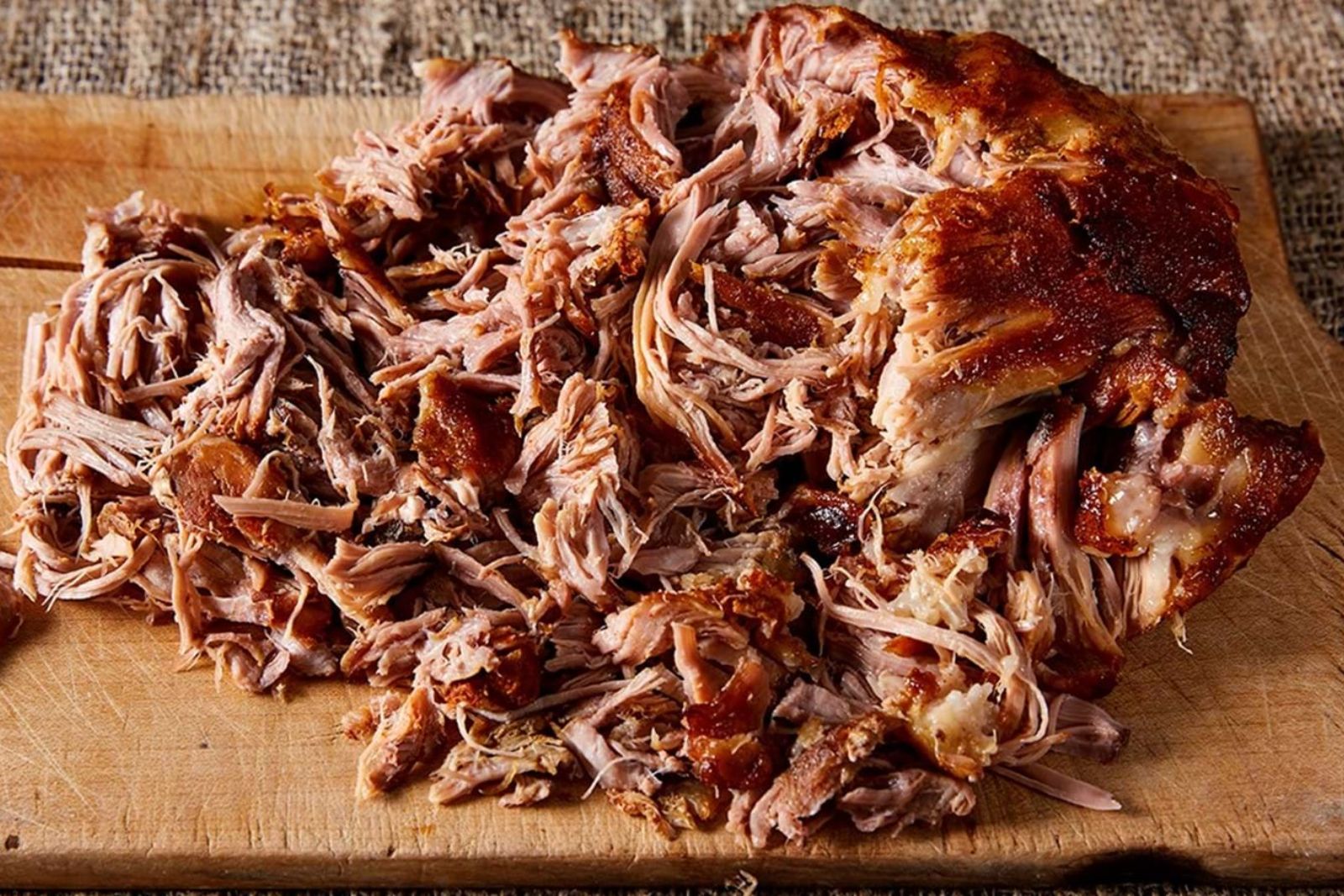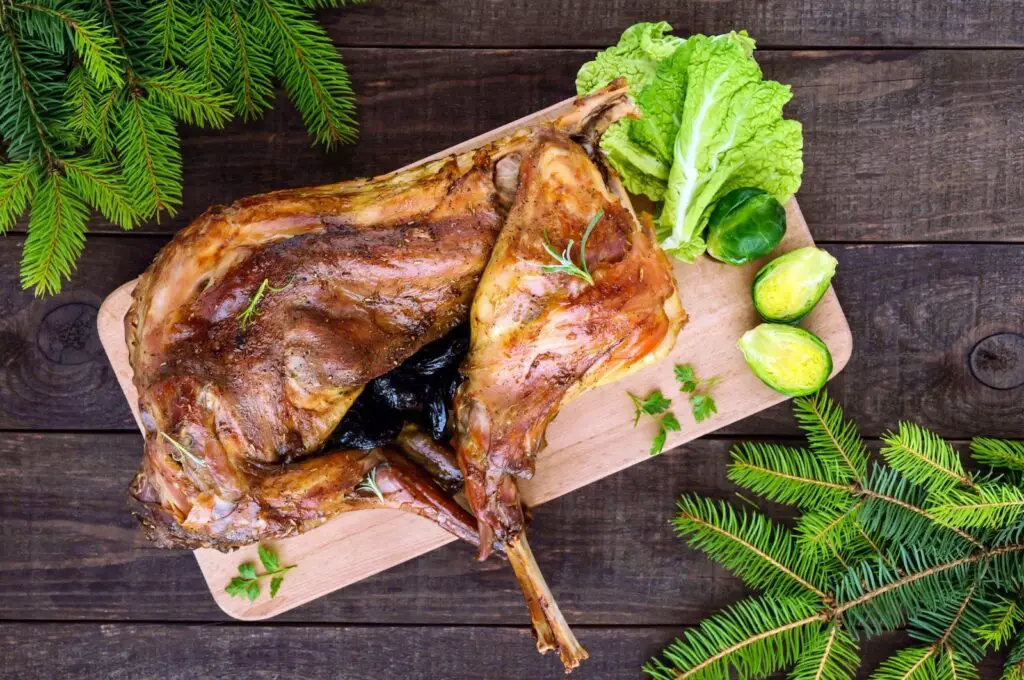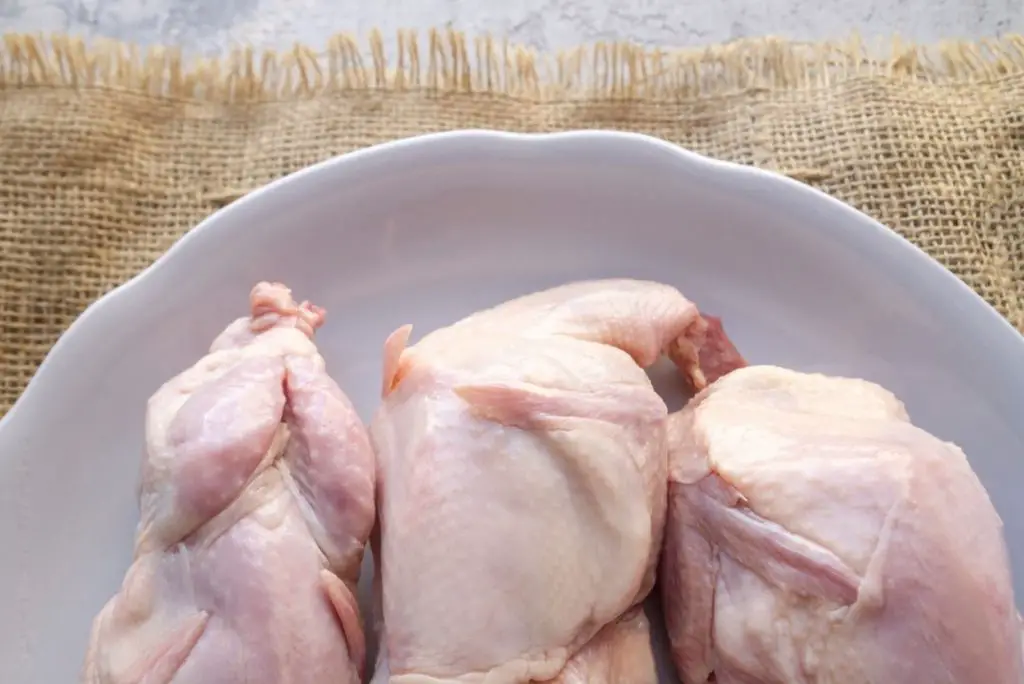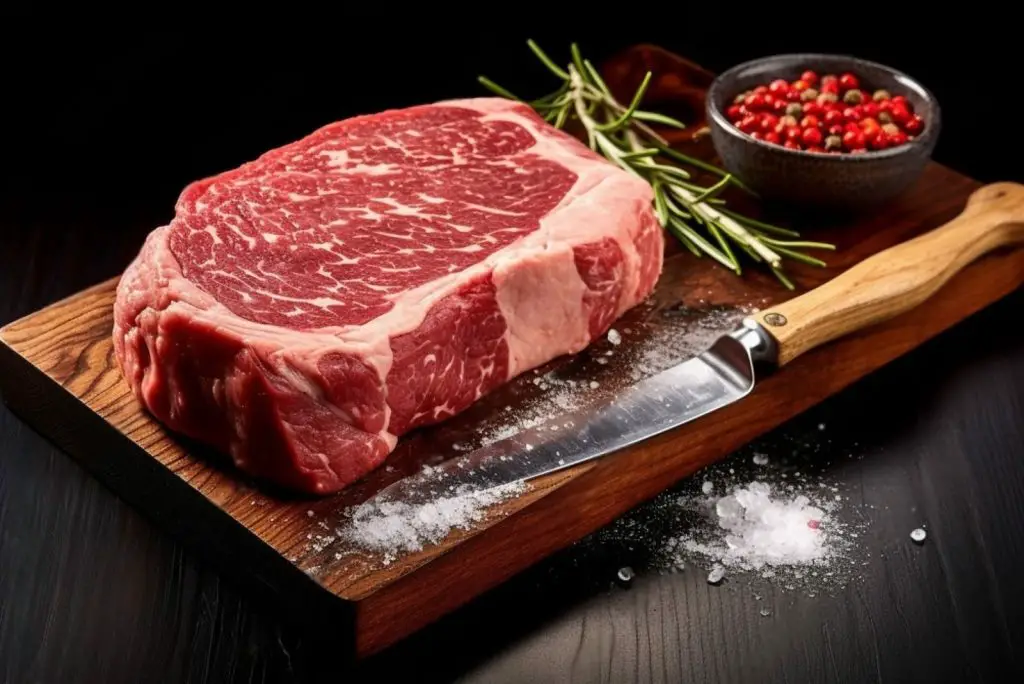
Pulled pork is a popular and delicious dish made from slow-cooked, tender pieces of pork that are shredded or “pulled” apart. Whether you’ve made a large batch of pulled pork or have leftovers from a barbecue feast, freezing is a great way to extend its shelf life and enjoy it at a later date. Freezing pulled pork properly ensures that it retains its flavor, moisture, and overall quality. This article provides a step-by-step guide on how to freeze pulled pork while maintaining its taste and texture.
Here’s a comprehensive guide on freezing pulled pork:
Step 1: Prepare the pulled pork
When it comes to freezing pulled pork, the key to preserving its succulent flavor and tender texture lies in the initial preparation. Before you embark on the process of freezing, it’s important to ensure that the pulled pork is fully cooked and seasoned according to your taste preferences. This step is crucial as it sets the foundation for the quality of the frozen dish.
Firstly, make sure that the pulled pork has been cooked thoroughly. The meat should be tender enough to easily shred or “pull” apart with a fork. This ensures that the frozen pulled pork retains its appealing texture when thawed and reheated. Undercooked meat can result in an undesirable chewy or tough consistency after freezing and reheating.
In addition to being fully cooked, seasoning the pulled pork is essential to imparting rich and well-rounded flavors to the dish. Whether you prefer a smoky barbecue flavor, a zesty marinade, or a combination of aromatic spices, ensure that the meat is seasoned to your satisfaction. Remember that flavors tend to mellow during freezing, so don’t hesitate to season slightly more assertively than you would for immediate consumption.
Once you’ve achieved the desired level of doneness and seasoning, allow the pulled pork to cool down slightly before proceeding to the packaging step. Allowing the meat to cool helps prevent condensation inside the packaging materials, which can lead to ice crystals forming and potentially affecting the texture and taste of the frozen pulled pork.
Can I freeze pulled pork that was made from frozen pork?
Yes, you can freeze pulled pork that was made from frozen pork. Ensure that the pulled pork is thoroughly cooked and seasoned before freezing. The freezing process can help preserve the quality of the dish made from frozen pork, provided proper cooking and storage procedures are followed.
Step 2: Portion the pulled pork
As you embark on the journey of freezing pulled pork, one of the most effective practices to ensure its quality preservation is the art of portioning. Dividing your batch of pulled pork into suitable portion sizes serves not only the convenience of future meal planning but also contributes to maintaining the pork’s taste and texture throughout its frozen state.
The rationale behind this step is twofold: convenience and quality preservation. By portioning the pulled pork into meal-sized servings, you save yourself the hassle of thawing more than necessary when you’re ready to enjoy it. Thawing large quantities of frozen pulled pork and then refreezing any leftovers can lead to potential loss of moisture and overall quality.
Moreover, each time you subject the pulled pork to the freeze-thaw cycle, you run the risk of affecting its texture and flavor. The formation of ice crystals during freezing and the subsequent moisture loss during thawing can gradually degrade the meat’s tenderness and succulence. By dividing the pulled pork into portion sizes that align with your typical consumption needs, you can minimize the frequency of freeze-thaw cycles, thus helping to maintain its high quality over time.
When portioning the pulled pork, consider the number of people you’ll be serving and the typical amount each person consumes. You can use a kitchen scale to achieve accurate portioning, or simply estimate based on your experience. Once divided, place each portion in its own wrapping, container, or resealable bag, ready for the next steps in the freezing process.
Can I freeze pulled pork in large batches?
It’s advisable to portion pulled pork into smaller sizes before freezing, rather than freezing in large batches. Smaller portions freeze and thaw more evenly, preserving the pork’s texture and taste. This approach also minimizes the need for repeated thawing and refreezing, which can affect overall quality.
Step 3: Package the pulled pork
Once you’ve successfully portioned your delectable pulled pork, the next step in the freezing process involves careful packaging. Proper packaging is essential to shield the pork from freezer burn, maintain its moisture, and prevent any unwanted flavors from seeping in. There are various methods to package pulled pork for freezing, each catering to your preferences and storage options.
One common approach is to tightly wrap individual portions of pulled pork using either plastic wrap or aluminum foil. This method forms a protective barrier around the meat, preventing exposure to air and minimizing the risk of freezer burn. Make sure to wrap the meat securely, eliminating any gaps where air could potentially sneak in. This is particularly important to maintain the pork’s texture and flavor during freezing.
Alternatively, you can opt for airtight freezer-safe containers. These containers are designed to keep moisture out and maintain the internal environment conducive to preserving the quality of the pulled pork. They come in various sizes, allowing you to store different portion sizes based on your needs. Simply place the pulled pork in the container, leaving a bit of space at the top to accommodate any potential expansion during freezing.
Resealable freezer bags are another convenient choice for packaging pulled pork. These bags are designed to minimize air exposure, and they allow you to remove excess air before sealing to prevent freezer burn. To further safeguard against air infiltration, consider using the “double bagging” method to place the pulled pork in one resealable bag, then insert that bag into another before sealing.
Regardless of your chosen packaging method, make sure to press out as much air as possible before sealing. Excess air can lead to the formation of ice crystals and negatively impact the quality of the pulled pork over time.
When placing the wrapped or packaged pulled pork into your chosen storage vessels, ensure that they are arranged in a way that maximizes space efficiency in your freezer. This not only helps with organization but also allows for proper airflow, which aids in efficient freezing.
Can I freeze pulled pork in its original store-bought packaging?
While it’s possible to freeze pulled pork in its original packaging, it’s often better to transfer it to airtight, freezer-safe containers or resealable bags. Original packaging might not provide sufficient protection against freezer burn and air exposure, which can affect the pork’s quality. Repackaging helps preserve flavor and texture during freezing.
Can I freeze pulled pork in glass containers?
Freezing pulled pork in glass containers is possible, but there are precautions to consider. Leave sufficient space at the top to accommodate expansion during freezing to avoid breakage. For more flexibility and to prevent potential breakage, consider using plastic containers or resealable freezer bags instead.
Step 4: Remove excess air
As you prepare to freeze your carefully portioned and packaged pulled pork, a crucial detail often overlooked is the removal of excess air from the packaging, especially when using resealable freezer bags. While it might seem like a minor step, expelling as much air as possible before sealing plays a pivotal role in ensuring the long-term freshness and taste of your frozen pulled pork.
Air contains moisture, and when it’s trapped within the packaging, it can contribute to the formation of ice crystals on the surface of the pulled pork. These ice crystals are a hallmark of freezer burn, an unwanted condition that can lead to changes in taste, texture, and overall quality. Freezer burn occurs when the moisture on the surface of the food evaporates and then refreezes, causing dehydration and altering the taste and appearance of the meat.
By diligently removing excess air from the packaging, you significantly reduce the chance of freezer burn. The process involves gently pressing down on the packaging around the pulled pork to push out any trapped air before sealing the bag. This step ensures that the meat is in direct contact with the packaging material, minimizing the potential for moisture loss and ice crystal formation.
Furthermore, eliminating excess air also prevents the growth of microorganisms that might thrive in oxygen-rich environments. By creating airtight conditions, you hinder the growth of bacteria, mold, and yeast, preserving the overall safety and quality of your frozen pulled pork.
When pressing out air, take care not to press too hard on the pulled pork itself, as this could inadvertently alter its texture. Gentle handling ensures that the meat remains as close to its original state as possible, even after freezing and thawing.
Step 5: Label and date
Maintaining an organized freezer is essential for ensuring that your pulled pork remains in optimal condition during its time in cold storage. One of the key practices that contribute to freezer organization is labeling and dating each package or container of pulled pork. This seemingly straightforward step holds significant importance in helping you manage your frozen inventory and enjoy your delicious pulled pork at its best.
When you label each package or container, you create a clear and quick visual reference for what’s inside. This can be especially helpful when you have various frozen foods in your freezer, preventing any confusion about the contents of a particular package. A clear label allows you to identify pulled pork easily, sparing you from the need to open multiple packages to find what you’re looking for.
Beyond simple identification, dating the packages is essential for tracking the storage time of your pulled pork. Freezing doesn’t halt the passage of time—it merely slows down the deterioration process. Over time, frozen foods can still experience quality changes, including flavor degradation and changes in texture. By dating each package with the freezing date, you establish a reliable record of how long the pulled pork has been in the freezer.
Additionally, labeling the packages with the freezing date enables you to practice the principle of “first in, first out” (FIFO). This means that you should use the oldest portions of pulled pork before newer ones. By consuming the older batches first, you minimize the chances of any pulled pork sitting in the freezer for an extended period and potentially losing its quality. FIFO ensures that you make the most of your frozen pulled pork while it’s still at its prime.
When labeling, use a waterproof marker or label to ensure that the information remains legible throughout the freezing and thawing processes. Include not only the freezing date but also any specific notes or seasonings if desired. Store the pulled pork with the label facing outward for easy visibility and access.
Step 6: Protect against freezer burn
As you aim to preserve the succulence and flavor of your pulled pork throughout its time in the freezer, employing additional protective measures can go a long way in maintaining its peak quality. One such technique involves double-wrapping the pulled pork or utilizing vacuum-sealed bags. These practices provide an extra layer of defense against freezer burn, a common foe that can compromise the taste and texture of your frozen treasure.
Freezer burn occurs when moisture from the surface of the food evaporates and then re-condenses as ice crystals, leading to dehydration. This process not only alters the flavor and texture of the pulled pork but can also introduce unpleasant odors and flavors caused by the exposure to air. To mitigate the risk of freezer burn, double-wrapping and vacuum-sealing are valuable strategies.
Double-wrapping entails encasing the already packaged pulled pork in an additional layer of plastic wrap or aluminum foil before placing it in the freezer. This extra layer acts as a barrier, reducing the chances of air reaching the meat and minimizing moisture loss. It’s essential to wrap the pulled pork securely, ensuring there are no gaps or openings that could compromise its protection.
Vacuum-sealing takes preservation a step further by removing air from the packaging entirely. Special vacuum-sealing machines suction the air out of the bag and create an airtight seal. Without air, the risk of freezer burn decreases significantly, and the pulled pork remains shielded from the harmful effects of moisture and oxygen exposure. Vacuum-sealing also helps maintain the pork’s natural flavors by reducing oxidation.
Both double-wrapping and vacuum-sealing methods are particularly effective for long-term storage, making them excellent choices if you intend to keep your pulled pork in the freezer for an extended period. These techniques are especially useful when dealing with irregularly shaped items like pulled pork, as they provide a snug fit that minimizes air pockets.
It’s worth noting that while these techniques offer enhanced protection against freezer burn, they should be used in conjunction with proper packaging and labeling practices. Remember to label each layer clearly so you can identify the contents and maintain an organized freezer.
Step 7: Freeze the pulled pork
As you embark on the freezing journey of your meticulously prepared pulled pork, ensuring the ideal freezing environment is essential to maintaining its sumptuous flavor and delightful texture. The way you position the wrapped or packaged pulled pork within the freezer plays a pivotal role in facilitating efficient freezing and safeguarding its overall quality.
Efficient airflow is crucial in the freezing process. When air circulates freely around the food items, it promotes uniform freezing, preventing the formation of large ice crystals that can compromise the texture of the pulled pork. To facilitate this, ensure that there’s enough space between individual packages, allowing the cold air to move around them.
When placing the wrapped or packaged pulled pork in the freezer, opt for an organized arrangement. Stack the packages in a way that minimizes direct contact with the freezer walls or other frozen items. This prevents uneven freezing, which can lead to varying rates of freeze-thaw cycles and potential deterioration of the pulled pork’s quality.
Additionally, consider the layout of your freezer shelves. If possible, allocate a dedicated section or shelf for your pulled pork. This not only makes retrieval easier but also allows you to manage the inventory effectively, ensuring that older portions are used before newer ones.
In situations where freezer space is limited, arranging the packages in a single layer initially and stacking them later once they’re partially frozen can help maximize space without compromising the efficiency of freezing. Just remember to maintain the recommended spacing between packages even when stacking.
Ultimately, the goal is to create an environment within the freezer that promotes rapid and consistent freezing. This approach minimizes the time during which the pulled pork is exposed to less-than-ideal freezing conditions, ensuring that the final frozen product retains its original taste and texture when thawed and reheated.
How long can I keep frozen pulled pork for?
Frozen pulled pork can be stored for around 2 to 3 months while maintaining its best quality. While it remains safe to eat beyond this timeframe, prolonged storage might lead to flavor and texture changes due to the gradual effects of freezing. Proper packaging and storage conditions play a significant role in preserving the pulled pork’s taste and texture during its time in the freezer.
Step 8: Thaw and reheat
The anticipation of savoring your frozen pulled pork is a culinary delight in itself, but the process of thawing and reheating requires a thoughtful approach to ensure that the flavors and textures you adore are maintained. Let’s delve into the steps of this final culinary chapter, ensuring that your pulled pork experience remains as delightful as the first bite.
Thawing is a critical preliminary step before reheating. To preserve the pulled pork’s moisture and taste, transfer it from the freezer to the refrigerator. This gradual thawing process prevents sudden temperature changes that can lead to moisture loss or uneven texture. Slow and even thawing is particularly crucial for larger portions, ensuring that the pulled pork remains succulent and tender.
For optimal results, place the packaged pulled pork on a plate or in a container to catch any potential drips as it thaws. Avoid thawing at room temperature, as this can create a breeding ground for bacteria and compromise the meat’s safety.
Once the pulled pork is fully thawed, it’s time to rekindle its flavors. When reheating, gentle methods are key to avoid overcooking or drying out the meat. If you’re in a hurry, the microwave is a quick option, but exercise caution to prevent overheating. Use short bursts of low power to gradually warm the pulled pork, checking and stirring between intervals to ensure even heating.
Alternatively, the stovetop offers precise control. Heat a skillet over medium-low heat and add a bit of moisture, like broth or water, to the pan. Add the pulled pork and warm it while stirring gently. This method helps retain the moisture and flavors of the meat.
The oven is an excellent choice for larger portions or to achieve a crispy exterior. Preheat the oven to a low temperature, around 300°F (150°C), place the pulled pork in an oven-safe dish with a bit of liquid, cover it with foil, and heat it slowly until warmed through. If desired, remove the foil for the last few minutes to allow the exterior to crisp up slightly.
Whichever method you choose, be mindful not to overcook the pulled pork. Remember, it’s already cooked, and reheating is intended to warm it through without compromising its tenderness. A meat thermometer can help ensure that the internal temperature reaches a safe level without exceeding it.
Other related questions
Can I refreeze pulled pork?
Refreezing pulled pork is generally not recommended due to potential quality loss. Repeated freeze-thaw cycles can compromise taste and texture. It’s best to thaw only what you plan to consume to maintain optimal flavor and safety.
How do I know if the pulled pork has gone bad after being frozen?
Inspect pulled pork for off-putting odor, color changes, or freezer burn. Texture changes like excessive dryness or sponginess indicate spoilage. If doubt persists, err on the side of caution and discard.
Can I freeze pulled pork with barbecue sauce?
Yes, you can freeze pulled pork with barbecue sauce. However, it’s recommended to separate the sauce and meat before freezing. Freezing can sometimes alter the texture of sauces. Store the pulled pork and sauce in separate airtight containers or bags, then combine them after thawing and reheating to maintain the best taste and texture.








